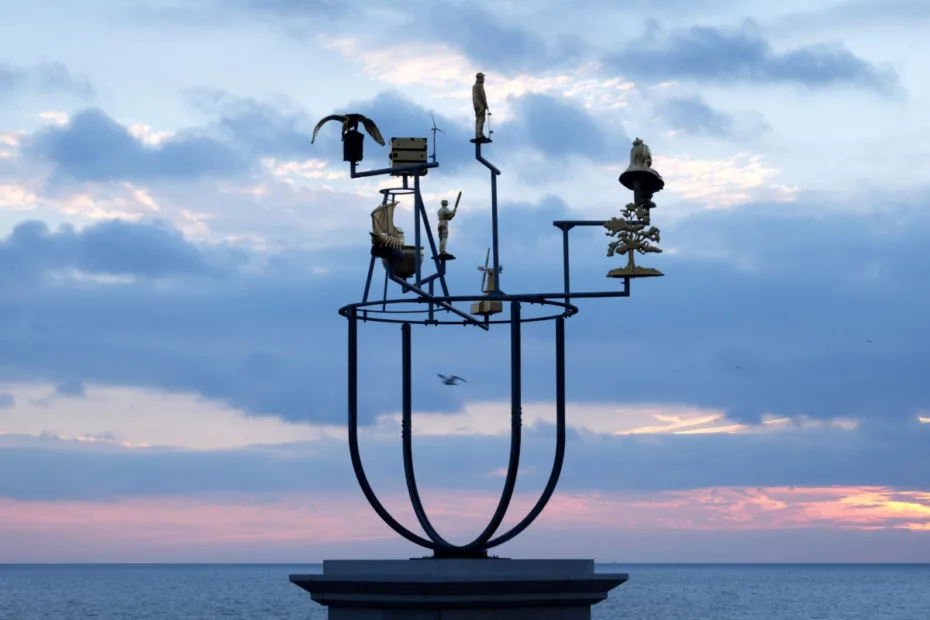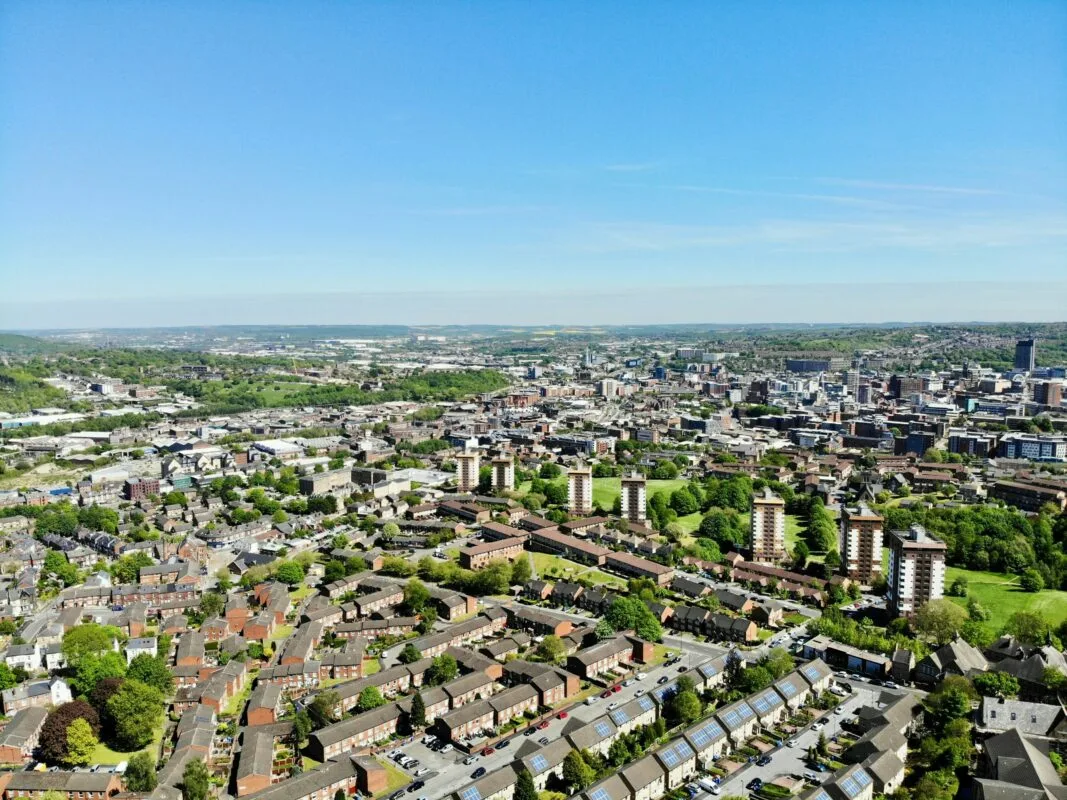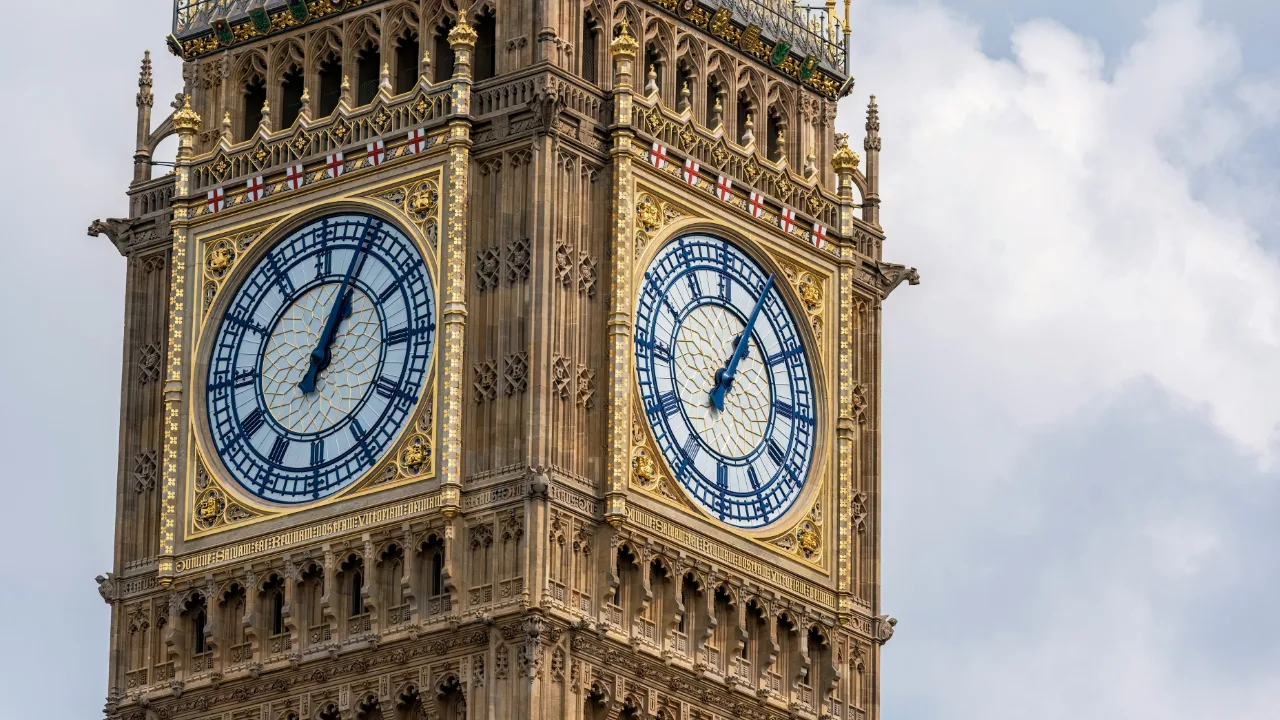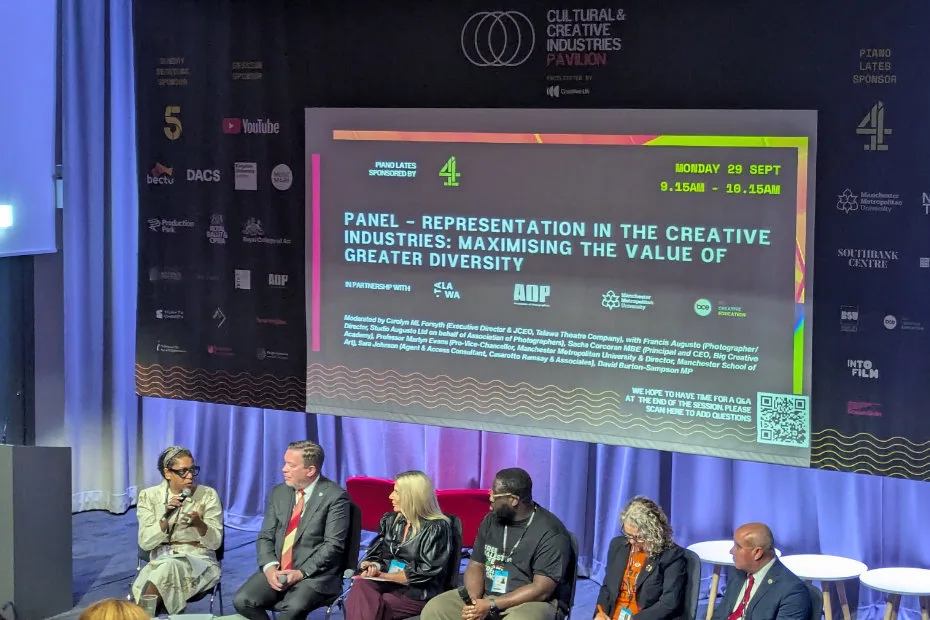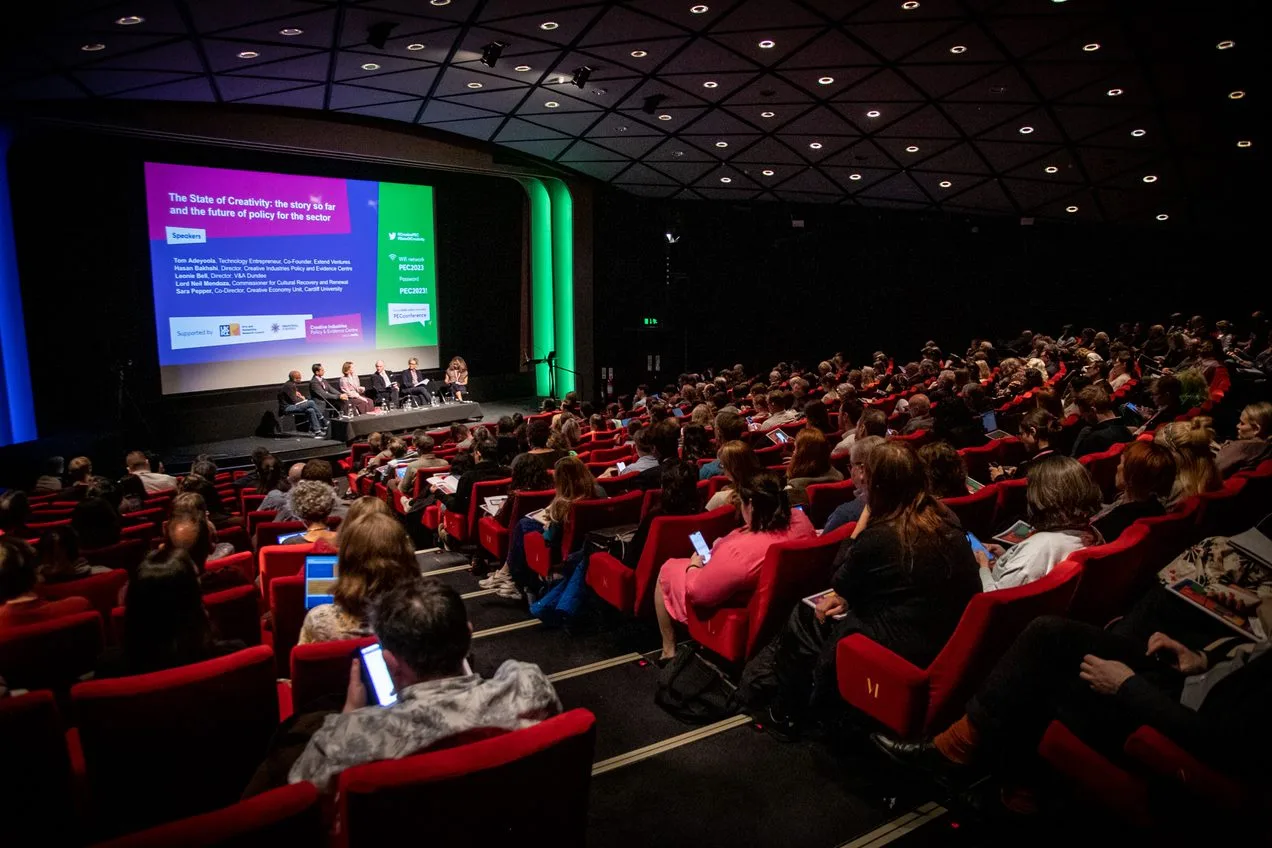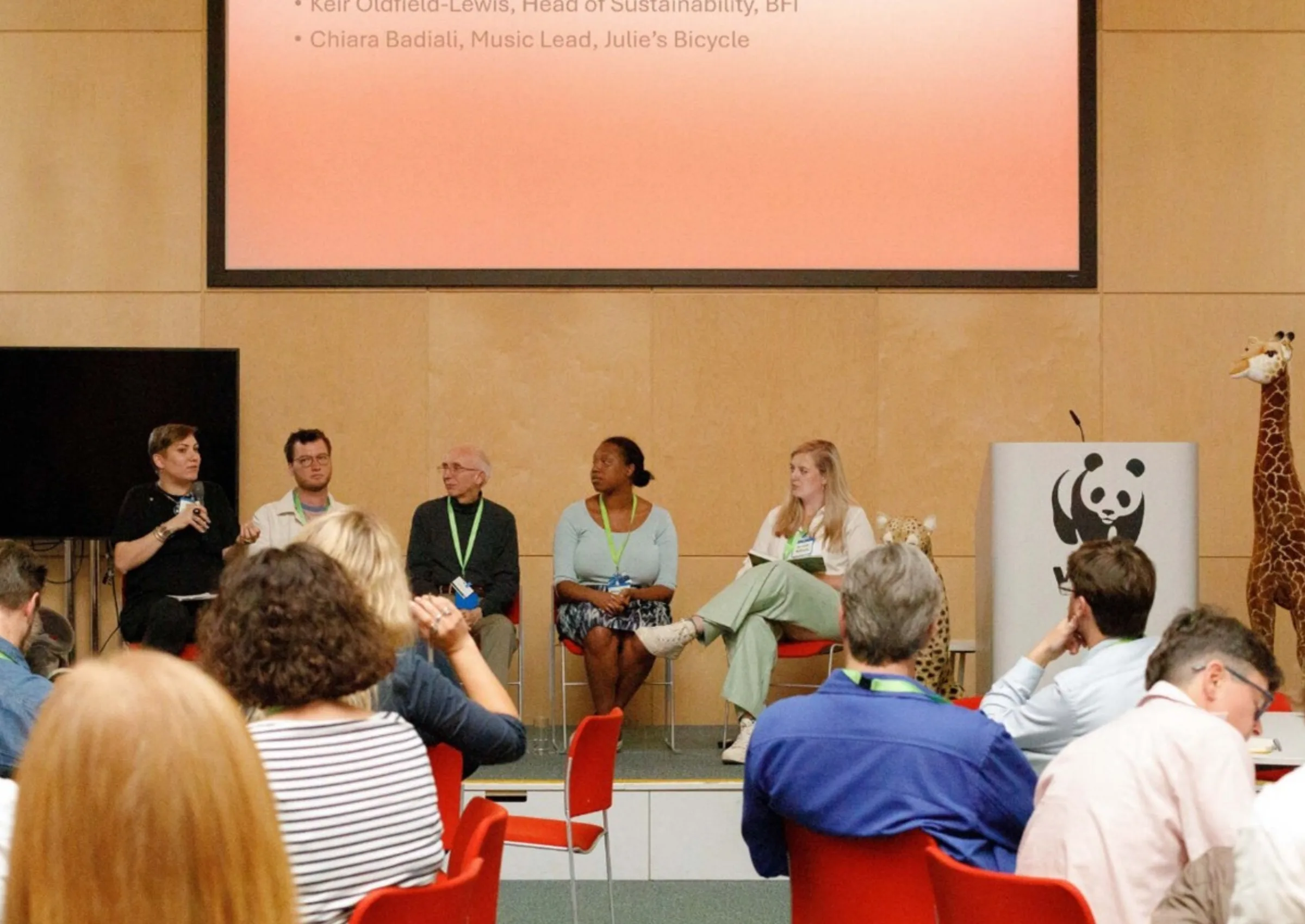Location matters, especially in the creative industries. The area of work I am leading will be looking at two important ways that location impacts the creative industries: creative clusters, and innovation. Clustering refers to a phenomenon where groups of businesses in one industry benefit from being near to each other. Think, for instance, of the potteries of Stoke or the financial services in the City of London. We know the creative industries are characterised by high levels of clustering – in the UK we have clusters ranging from games in Dundee to film and television in Cardiff, Bristol and Salford. Clusters are also increasingly used as a unit of analysis for targeting economic development (for instance, the PEC is being funded as part of the AHRC’s Creative Industries Clusters Programme), so it is vital for the PEC to help build evidence about the UK’s creative clusters and how they work.
Clustering, and proximity in general, is also important for innovation, as businesses in clusters are more likely to innovate. This is particularly true in creative industries, because innovation in creative industries differs from innovation as seen in other sectors, given that creative firms are more likely to produce content or services rather than physical products. For this reason, traditional approaches to innovation policy (R&D tax credits, patents, etc) are less effective in supporting creative firms’ innovation activities. So the work of the PEC will be looking to better understand the nature of innovation in the creative industries. While we are consulting with our stakeholders in a number of ways, there are some key issues related to creative clusters and innovation that I personally believe the PEC must address to deliver on its vision. Here I discuss these, with some recommended readings to give further insights.
1) What drives the success of creative clusters?
We know the UK has some of the world’s leading creative clusters, but we know relatively little about why some clusters grow while others do not. For that matter, how are these clusters born? Can a single, planned intervention (for instance the building of the Turner Contemporary in Margate) kickstart a creative cluster, or does cluster building require incremental changes over time? Once a cluster exists, how does it change over time? How do creative clusters reinvent themselves or how do they die? Addressing such questions will require a range of academic approaches, from economic geography to technology studies, sociology and complexity science. By deploying these, and more, I hope the PEC will enhance our understanding of the anatomy and life cycle of the UK’s creative clusters.
Some of these questions were explored in the Brighton Fuse report. This AHRC-funded project, which finished in 2014, used quantitative and qualitative methods to understand the structure, characteristics and impact of the Brighton creative cluster. I’m delighted that the PEC reunites a number of the key researchers from that project: Juan Mateos Garcia (at Nesta), Prof Jonathan Sapsed (now at Newcastle), Dr Roberto Camerani (Sussex) and Dr Monica Masucci (Sussex). The PEC will be working on an exciting initiative to extend the insights from the Brighton Fuse project and follow-up projects in Bristol and the North-East of England through an ambitious data analytics project we’re calling Fuse+ – watch this space for more details.
2) How do creative clusters (and creative industries more broadly) differ from other clusters (and industries), and what is their relation to the rest of the economy?
Or, put a different way, what actually is a creative cluster? Clustering happens both at the geographical (i.e. Manchester) and sub-sectoral (i.e. film production) levels, and one of my aims is to improve our understanding of how creative industries clusters differ from other clusters in other parts of the economy. Of course, creative clusters themselves vary greatly, and our research will be sensitive to this fact. Relatedly, we are also interested in exploring how creative industries link to the rest of the economy. We know a bit about this through Nesta’s previous research estimating the size of the creative economy (that is, all parts of the economy that draw upon creative inputs, without necessarily generating outputs that would see them classed as creative industries), but how do creative industries link to other sectors?
There have been important developments in economic geography in recent years that have measured the relationship between different businesses based on their technology use patterns rather than their Standard Industrial Classification (SIC) codes. International researchers have begun using these techniques to get a more sophisticated understanding of how the creative industries relate to other sectors and we propose to develop this research to analyse creative clusters in the UK too.
3) What policies work to support creative industries and creative clusters? How can we help to design better ones?
After years of receiving limited attention from policymakers, the creative industries are a focus of government, with the recent Creative Industries Sector Deal representing a £150m investment in the sector. But with the money starting to flow, how can we ensure that the policies being designed will work? Are clusters the right unit of analysis for targeting interventions? Should the priority be to scale up existing clusters or invest in emerging ones? This is an area that needs both data and theory to help us better understand what policies are needed.
The What Works Centre for Local Economic Growth has reviewed the rationale and evidence base for supporting clusters. It argues that the case for investment in clusters has historically been more a function of the relative convenience for policymakers of targeting a specific location, rather than a proven empirical rationale. This suggests that while cluster-based interventions can be useful, being in a cluster is not the sole driver of a company’s success. This is important, as while this work strand’s remit includes creative clusters, we will also be looking at creative industries outside clusters, for instance in rural settings, as well as across the UK’s regions. I feel our work in this area can help to inform the policy agenda of growing robust local economies across the whole UK.
4) What does innovation in the creative industries look like, and how is it different from ‘traditional’ innovation?
For a researcher based at SPRU, the research centre that has pioneered innovation studies research for over 50 years, this is an obviously interesting research question. Much of what we know about research and development (R&D) relates to the development of products and technologies, rather than the services, experiences and content that are the hallmarks of creative business. How should we define R&D and innovation when it comes in the form of an intangible good (such as software) or one where the innovativeness is along aesthetic dimensions that are subjective (for instance music, or video games)? Can we identify common processes of R&D in creative industries firms, and can the government incentivise creative R&D using tax relief, say, in the way it incentivises R&D related to science and technology? The PEC’s Research Director, Bruce Tether, has previously looked at the ways in which different types of creative firm in the knowledge-intensive business services sector (architecture consulting, specialist design and software consulting) engage in different forms of innovation depending on the nature of the knowledge they create. This paper is interesting both for exposing the substantial variations in innovation that exist even within creative business services and in its innovative methodology that combines surveys and scraped web data.
5) How can we help local policymakers to access the information they need to make informed decisions about the creative industries?
In recent years, researchers have been made strides in producing data sets mapping the geography of the UK’s creative industries and their ecosystems. My aim is for the area of work I lead to continue in this vein of work, generating new data sets that will help all of our stakeholders – policymakers, yes but also industry (including freelancers), educators, researchers and beyond – to understand the local creative ecosystems of which they are part.
Five years from now, I hope that through addressing these questions and new ones raised by industry, we will be able to point to research from the PEC that has led to better policies and, as a result of which, faster growth in the creative industries. Please send me your thoughts and recommendations at j.siepel@sussex.ac.uk.
Suggested reading
Bakhshi, H., Hargreaves, I. and Mateos-Garcia, J. (2013). A Manifesto for the Creative Economy. Nesta, Available at: https://media.nesta.org.uk/documents/a-manifesto-for-the-creative-economy-april13.pdf [Accessed March 2019]
Bakhshi, H and Lomas, E. (2017.) Defining R&D for the creative industries. Arts and Humanities Research Council, Nesta and UCL. Available at: https://ahrc.ukri.org/documents/project-reports-and-reviews/policy-briefing-digital-r-d/ [Accessed March 2019]
HM Government, (2018). Industrial Strategy Creative Industries Sector Deal. Available at: https://assets.publishing.serv… [Accessed March 2019]
Innocenti, N. and Lazzeretti, L. (2019). Do the creative industries support growth and innovation in the wider economy? Industry relatedness and employment growth in Italy. Industry & Innovation, [online] Volume 25, 2018, Issue 9. Available at: https://www.tandfonline.com/doi/abs/10.1080/13662716.2018.1561360 [Accessed March 2019]
Klinger, J., Mateos-Garcia, J. and Stathoulopoulos, K. (2018). Creative Nation. Nesta. Available at: https://www.nesta.org.uk/report/creative-nation/ [Accessed March 2019]
Nathan, M. (2013). Agglomeration, clusters, and industrial policy. Oxford Review of Economic Policy, [online]. Available at: https://www.researchgate.net/profile/Max_Nathan/publication/265824024_Agglomeration_clusters_and_industrial_policy/links/57b98c0908ae6f1737683558/Agglomeration-clusters-and-industrial-policy.pdf [Accessed March 2019]
Nichols, B and Wojan, T.R. (2018). Design, innovation, and rural creative places: Are the arts the cherry on top, or the secret sauce? PLoS ONE, [online]. Available at: https://journals.plos.org/plosone/article/file?id=10.1371/journal.pone.0192962&type=printable [Accessed March 2019]
Pina, K. and Tether, B. (2016). Towards understanding variety in knowledge intensive business services by distinguishing their knowledge bases. Research Policy, [online] Volume 45, Issue 2, p. 401-413. Available at: https://www.sciencedirect.com/science/article/abs/pii/S0048733315001584?via%3Dihub [Accessed March 2019]
Sapsed, J. and Nightingale, P. (2016). The Brighton Fuse, University of Brighton, University of Sussex, available at: http://www.brightonfuse.com/wp-content/uploads/2013/10/The-Brighton-Fuse-Final-Report.pdf [Accessed March 2019]
Related Blogs
Research resources on Creative Clusters
We’ve collated recent Creative PEC reports to help with the preparation of your Creative Cluster bid…
What UK Job Postings Reveal About the Changing Demand for Creativity Skills in the Age of Generative AI
The emergence of AI promises faster economic growth, but also raises concerns about labour market di…
Creative PEC’s digest of the 2025 Autumn Budget
Creative PEC's Policy Unit digests the Government’s 2025 Budget and its impact on the UK’s creative …
Why do freelancers fall through the gaps?
Why are freelancers in the Performing Arts consistently overlooked, unseen, and unheard?
Insights from the Labour Party Conference 2025
Creative PEC Policy Adviser Emily Hopkins attended the Labour Party Conference in September 2025.
Association of South-East Asian Nations’ long-term view of the creative economy
John Newbigin examines the ASEAN approach to sustainability and the creative economy.
Take our Audience Survey
Take our quick survey and you might win a National Art Pass.
Culture, community resilience and climate change: becoming custodians of our planet
Reflecting on the relationship between climate change, cultural expressions and island states.
Cultural Industries at the Crossroads of Tourism and Development in the Maldives
Eduardo Saravia explores the significant opportunities – and risks – of relying on tourism.
When Data Hurts: What the Arts Can Learn from the BLS Firing
Douglas Noonan and Joanna Woronkowicz discuss the dangers of dismissing or discarding data that does…
Rewriting the Logic: Designing Responsible AI for the Creative Sector
As AI reshapes how culture is made and shared, Ve Dewey asks: Who gets to create? Whose voices are e…
Reflections from Creative Industries 2025: The Road to Sustainability
How can the creative industries drive meaningful environmental sustainability?
